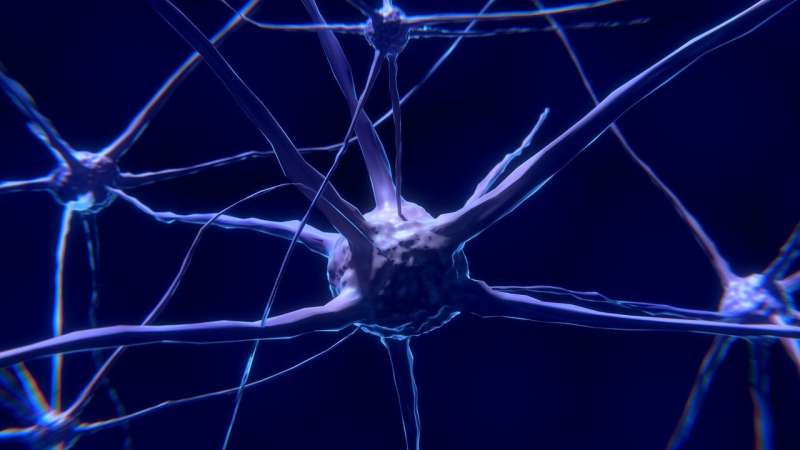Credit: CC0 Public Domain
A team of researchers from UTSA's Neurosciences Institute is challenging the historical belief that the organization of the cortical circuit of GABAergic neurons is exclusively local.
UTSA College of Sciences researchers Alice Bertero, Hector Zurita and Marc Normandin and biology associate professor Alfonso Junior Apicella collaborated on the research project.
In the past, labeling individual neurons allowed researchers to study the neurons that project from the brain's cortex to the striatum. The results suggested that the pathways are exclusively excitatory. For this reason most people assumed that inhibition must occur when excitatory cortical neurons activate intrastriatal inhibitory.
The UTSA team contested this view by providing anatomical and physiological evidence for the existence of long-range parvalbumin-expression neurons from the cortex to the striatum in the brains of mice.
This finding is an essential step toward better understanding the neuronal mechanism of cortical long-range GABAerginc neurons in healthy and diseased brains. In particular this could lead to new treatments for patients with epilepsy, post-traumatic stress disorder, schizophrenia and other mental conditions in which GABAergic neurons play a significant role.
"Daily we are bombarded by multiple auditory stimuli, including various speeches," said Apicella. "Particularly, listeners must determine which speech acoustic features are relevant and generalize across irrelevant ones during speech perception. We think that the interaction between the cortex and the striatum is fundamental to optimize nonnative speech learning in adulthood. Therefore, it is crucial to determine which of the cortical-striatum pathway's cellular elements are involved in this process."
The discovery that the striatum receives both excitatory and inhibitory inputs from the cortex suggests that these inputs' timing and relative strength can modulate the striatum's activity. This is important because it invites the scientific community to speculate that the long-range parvalbumin-expressing projects could play a role through gamma oscillation synchronization between the auditory cortex and striatum.
The team proposes that future experiments will provide further insight into the role of the timing and ratio of excitation and inhibition, two opposing forces in the mammalian cerebral cortex, affecting the cortico-striatal dynamic.
"Future studies," said Apicella, "will provide a general mechanism of cortico-striatal oscillation involved in reward learning and action-selection behavior driven by the auditory stimuli."
More information: Alice Bertero et al, Auditory Long-Range Parvalbumin Cortico-Striatal Neurons, Frontiers in Neural Circuits (2020). DOI: 10.3389/fncir.2020.00045
Journal information: Frontiers in Neural Circuits
Provided by University of Texas at San Antonio
























